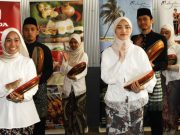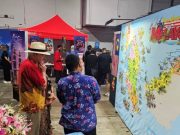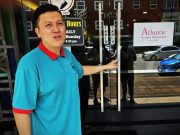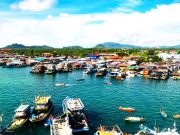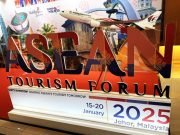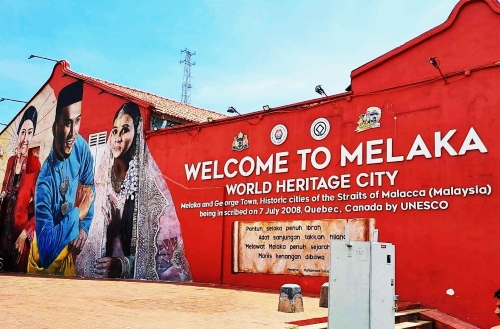Preserving Melaka’s Culture: Lessons for Aotearoa
By Ricky Fernandez
MELAKA, Malaysia – The beginning of the 20th century was an alarming period for Māori culture. It seemed as though Te Reo Māori and other aspects of Māori life were on a downtrend.
Between the 1970s and early 2000s, the ‘Māori Renaissance’ revived the integration of Māori culture into New Zealand society.
By the 1990s, the Māori Language Act made Māori an official language and called for the creation of the Māori Language Commission.
Soon, basic phrases like Kia Ora, Haere Mae and Ka Pai became common lingo for all Kiwis.
According to statistics, currently 20% of Māori speak Te Reo.
Melaka has experienced a similar push and pull of different cultures and languages for centuries. The arrival of Persian traders, followed by the Europeans, redefined cultural norms.
Melaka is a lesser-known region to the average Kiwi, despite being only a 2-hour drive from Malaysia’s major tourist and business hub – Kuala Lumpur.
Once a colonial trading post under the Portuguese, Dutch, and British, this relatively unknown region is now a multicultural melting pot of Malay, Chinese, Indian, and ‘Eurasian’ communities living together harmoniously.
However, with so many different cultures vying for a place to live and grow their communities, how does a multicultural city preserve indigenous cultures while embracing diversity?
Today, several cultures in Melaka are nearing the brink of extinction, while others are thriving and spreading across the country.
The Melaka Cultural Renaissance
In a major push to freeze the modernisation of culturally significant sites in Melaka, the region was declared a World Heritage Site by UNESCO in 2008.
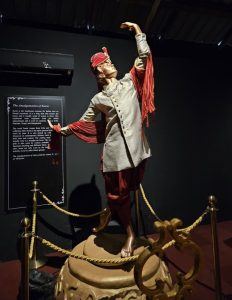
Since then, the Melaka state government has heavily backed cultural preservation projects and has driven hoards of tourists from China, Kuala Lumpur and Singapore to this tourist enclave to showcase its attractions. The revenue generated from promoting the nation’s cultural tourism is helping finance even larger and more ambitious projects.
Melaka is set to host the World Tourism Day (WTD) celebrations from September 27 to 29, 2025. The event is expected to attract over 3,000 international and local participants, including tourism ministers, heads of national tourism organisations, and global industry leaders from more than 60 countries.
Melaka’s vast collection of 26 museums is pivotal to promoting cultures to tourists and locals. Museums in Melaka are often restored ancestral homes, grand royal estates or seemingly ‘out of place’ buildings constructed by the Europeans.
One such Museum is the Baba & Nonya Heritage Museum, located on Jonker Street, Melaka’s Chinatown.
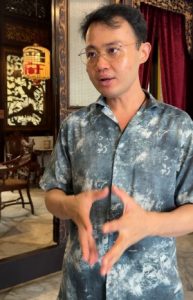
Inspired by the concept of the Anne Frank House, the 4th generation descendants of the wealthy Chinese-Malay ‘Tan’ family “opened their ancestral home to tourists and locals to show them what it means to be a Peranakan,” says Yuen Thien Lee – museum manager and author of the award-winning book ‘The Baba and Nonya Renaissance: Identity Maintenance & Shifts.’
‘Peranakan’ refers to those born locally but with heritage from outside of Malaysia. The term is most commonly applied to a community of people known as ‘Straits Chinese,’ a fusion of Malay, Chinese and even Indonesian heritage.
Mr Lee, a 5th generation Baba (Peranakan man), says that the use of the Peranakan language has become limited as the indigenous Malay has evolved into a Lingua Franca.
“The Baba and Nonya speak a Patois language, meaning it is mixed. It is essentially Malay but with Hokkien loan words and different pronunciation.”
“The language is struggling to survive. It is being replaced by Malay and English. And even in Chinese schools they now teach Mandarin.”
While the language is struggling, Peranakan culture is spreading like wildfire and increasingly becoming the face of Malaysian culture and cuisine. But not all cultures in Melaka are experiencing a modern renaissance.
The Portuguese Settlement, located along the seaside a few kilometres from the City Centre, is home to the Kristang people. This community is the last remaining ‘recognised’ Portuguese community in Asia.
Kristang people, literally meaning ‘Christians,’ are a result of Portuguese men settling in Melaka and marrying Malay women during the Portuguese occupation in the 16th and 17th century.
The people speak Papia Kristang, a Creole mixture of old Portuguese and elements of the Indigenous Malay language.
Only a small number of pure Kristang people remain, and even fewer that speak Papia Kristang.
“In Chinese schools and Indian schools they teach Chinese and Indian, but there is no Portuguese school so the language is only passed down when parents speak to children,” explains a local Portuguese seafood restaurant owner and lifelong resident, Maria.
“We are trying as hard as we can, because if we don’t speak Kristang then our mother tongue will be lost forever, she says”
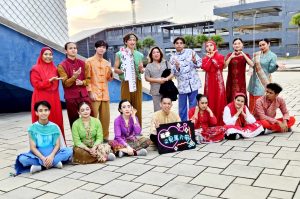
“I learned it from my parents and I am very proud of my culture so I want to pass it on.”
The government has preserved Portuguese land ownership, but residents say little help has been given to preserve the Kristang culture itself.
“The houses here cannot be sold to any other races, it can only be sold to Portuguese. But that is not enough to make people stay,” she remarks.
Similarly, Māori Land Court was established to prevent the loss of Māori land and to protect land ownership rights.
Maria says that while the land has been kept in the hands of the Kristang people, “only few people remain in the village.”
Melaka-born Nigel is the manager of the biggest Melaka-Eurasian restaurant chain in Kuala Lumpur. He says that Kristang culture is at risk of dying out due to a mass exodus.
Nigel himself “moved out of the Portuguese Settlement in Melaka to find more opportunities.”
“Everybody is leaving because there is no development in the settlement and it is hard to live,” he says.
“The young people are all leaving to go to University then live in the central city.”
The Māori community in Aotearoa has been fighting just as hard to keep their culture alive and has found some success with the support of government and everyday Kiwis.
As per the 2023 Census, there are over 213,000 Māori speakers in New Zealand. A huge increase from the roughly 185,995 in 2018. Largely thanks to Te Reo being taught in schools and the growing Māori population that is expected to reach 1 million by the early 2030s.
The contrasting approaches to cultural preservation have had very different outcomes. Learning from the Peranakan and Kristang people, Aotearoa is reminded of how important it is for all Kiwis to embrace Māori culture.
Editor: Ricky Fernandez’s trip to Malaysia was made possible by the Asia New Zealand Foundation.
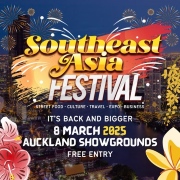 The Southeast Asia Festival www.seasia.co.nz returns at Auckland Showgrounds, 8 March 2025. FREE ENTRY.
The Southeast Asia Festival www.seasia.co.nz returns at Auckland Showgrounds, 8 March 2025. FREE ENTRY.
With MORE unique Southeast Asian foods, MORE traditional performances and MORE immersive activities!
It’s like a day trip to Southeast Asia ✈️
HUNDREDS of food options and non-stop entertainment from Philippines, Malaysia, Thailand, Indonesia, Vietnam and more!
FREE parking at Cornwall Park (1 min walk)
Auckland Showgrounds, 217 Green Lane West, Epsom


